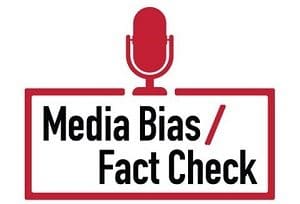LEAST BIASED
These sources have minimal bias and use very few loaded words (wording that attempts to influence an audience by using an appeal to emotion or stereotypes). The reporting is factual and usually sourced. These are the most credible media sources. See all Least Biased sources.
- Overall, we rate Transparency International Least Biased based on balanced story selection and a singular focus on their mission. We also rate them Very-High for factual reporting due to proper sourcing and as a reliable source for fact-checkers.
Detailed Report
Bias Rating: LEAST BIASED
Factual Reporting: VERY HIGH
Country: Germany
Press Freedom Rating: MOSTLY FREE
Media Type: Organization/Foundation
Traffic/Popularity: Medium Traffic
MBFC Credibility Rating: HIGH CREDIBILITY
History
Transparency International (TI) is an international non-governmental organization which is based in Berlin, Germany, and was founded in 1993. Its nonprofit purpose is to take action to combat corruption and prevent criminal activities arising from corruption. It publishes, for example, the Global Corruption Barometer and the Corruption Perceptions Index.
Read our profile on Germany’s media and government
Funded by / Ownership
Transparency International is funded through donations from corporations, foundations, individuals, and world government organizations. They fully disclose their financials and donors.
Analysis / Bias
In review, Transparency International measures and reports corruption to prevent criminal activities. The organization defines corruption as “the abuse of entrusted power for private gain, which eventually hurts everyone who depends on the integrity of people in a position of authority.” The website features the Corruption Perceptions Index, which ranks 180 countries and territories by their perceived levels of public sector corruption, according to experts and business people. For example, the United States is ranked 23/180 and has a low to moderate corruption level, whereas the Scandinavian countries have very low corruption.
In case you are wondering, Somalia is rated last with extremely high corruption levels. The website also publishes well-sourced news such as this WHY DON’T THE VICTIMS OF BRIBERY SHARE IN THE RECORD-BREAKING AIRBUS SETTLEMENT?
Politically, Transparency International takes pro-science positions such as concern for climate change where they monitor countries’ efforts, CLIMATE ADAPTATION FINANCE GOVERNANCE STANDARDS – A NEW APPROACH PILOTED IN THE MALDIVES AND BANGLADESH. When reporting on world leaders such as USA president Donald Trump they often report negatively, such as this: TRUMP’S GOLD-PLATED SON-IN-LAW AND OTHER POTENTIAL CONFLICTS OF INTEREST IN THE WHITE HOUSE. In general, information is highly factual and displays a minimal bias as they stay focused on their agenda of monitoring corruption, which frequently crosses party lines.
Failed Fact Checks
- A factual search reveals they have not failed a fact check. In fact, they are frequently used by IFCN fact-checkers for credible information.
Overall, we rate Transparency International Least Biased based on balanced story selection and a singular focus on their mission. We also rate them Very-High for factual reporting due to proper sourcing and as a reliable source for fact-checkers. (7/10/2016) Updated (D. Van Zandt 12/25/2022)
Source: https://www.transparency.org/
Last Updated on July 1, 2023 by Media Bias Fact Check
Do you appreciate our work? Please consider one of the following ways to sustain us.
or
Left vs. Right Bias: How we rate the bias of media sources


